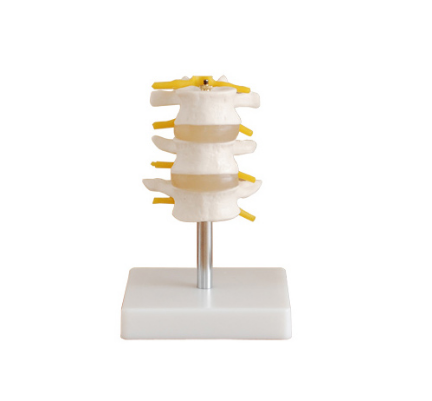Spinal models play a crucial role in helping to understand the physiological function of the spine. Here is a detailed explanation of how the understanding of the physiological function of the spine can be advanced through the spinal model:

First, visually display the spinal structure
By accurately simulating the anatomy of the human spine, including vertebrae, intervertebral disc, ligaments, muscles and other tissues, the spine model provides learners with an intuitive and three-dimensional visual display. This intuitive display helps learners to quickly establish the overall understanding of the structure of the spine, thus laying a foundation for their further understanding of the physiological function of the spine.
Second, simulate physiological bending and movement
Spinal models are often able to simulate the natural physiological curvature of the spine, such as cervical lordosis, thoracic kyphosis, and lumbar lordosis. These physiological bends are essential for maintaining body balance, protecting internal organs, and performing complex motor functions. Through the spine model, learners can clearly observe the shape and distribution of these physiological curvatures and understand how they work together to achieve the support, protection and movement functions of the spine.
3. Explain support and protection mechanisms
The spine model can also help explain the support and protection mechanisms of the spine. As the central bone of the human body, the spine carries the weight of the body and distributes and transfers this load through the interaction of vertebrae, discs and ligaments. At the same time, the spine also encloses and protects important tissue structures such as the spinal cord and nerve roots. Through the spine model, learners gain insight into the interactions and relationships between these structures to better understand the support and protection mechanisms of the spine.
Fourth, promote practical operation and experience
The spine model is not limited to visual display, but also allows learners to practice and experience. For example, by simulating the movements of the spine such as flexion, extension and rotation, learners can personally experience the changes of the spine under different postures and stresses, thereby deepening their understanding of the motor function of the spine. This kind of practical operation and experience helps learners to combine theoretical knowledge with practical operation and improve learning effect.
To sum up, the spine model can effectively help learners understand the physiological functions of the spine by visually displaying the structure of the spine, simulating physiological bending and movement, explaining the support and protection mechanism, promoting practical operation and experience, and assisting teaching and training.
